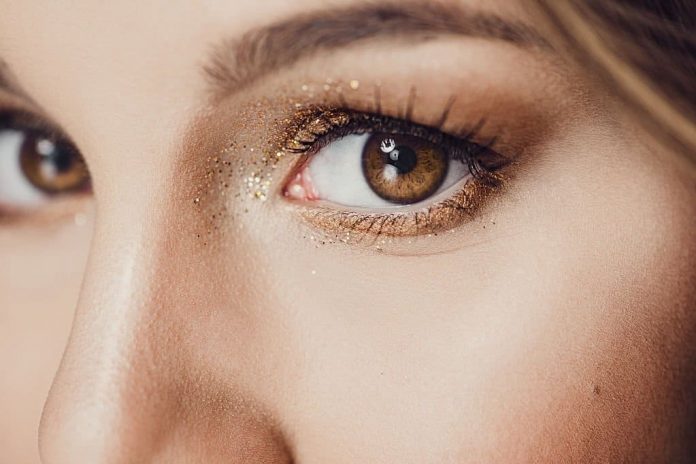Beauty is in the eye of the beholder and few eyes are as striking as hazel eyes.Whereas brown and even blue eyes are relatively common, hazel is something of a rarity and often described as different colors, but why is that?
That said, hazel can change over time. It’s all thanks to human genetics, which we’ll explore shortly.We’ll also take a closer look at hazel characteristics, what sets them apart from other human eye colors, and how people with this eye color supposedly differ from others.
What Causes Hazel Eyes?
For many of us, our first foray into human genetics is a simplified take on dominant and recessive genes, oftentimes about hair or eye color.
We learn that brown eye color is dominant, while blue eyes are recessive. By this logic, two blue-eyed parents couldn’t have a child with light brown eyes, much less a child with hazel or even the more mysterious grey eyes.
Just as you might see a red-haired baby born to a pair of blondes or brunettes, you’ll find family members with different eye colors.
Here’s the science behind hazel eye genetics:
Eye color inheritance isn’t determined by one or two traits, but by at least 16 different genes. This means that if you have blue or brown eyes and the right genes, you might end up with a bouncing hazel baby.There’s actually no hazel, green, or blue pigment present in the iris (the colored part of the eye.) Eye color is dependent on the amount of melanin present, the same pigment that determines skin color.
People with hazel eyes aren’t necessarily born this way! White, non-Hispanic babies with blue eyes can develop more melanin as they age, leading to hazel or, in other circumstances, green and brown eyes.
And while hazel eyes don’t change colors, they can appear to do so according to someone’s mood.
Many people with hazel eyes have a brown ring around the outer part of their pupils, adding to their air of mystery. In some cases, this ring is a form of central heterochromia.Meanwhile, in others, this ring is more like a burst-like pattern, exaggerating the low concentrations of melanin. This differs from green eyes, which usually appear more solid in color.Although there’s no uniform color, they take their name from the hazelnut shel
The way hazel appears to change color isn’t a parlor trick. It’s actually due to Rayleigh scattering, the same optical phenomenon responsible for the blue sky. Combined with the lower concentration of melanin, the way light scatters within the iris reveals not just a single natural eye color, but varying wavelengths of green, blue and brown
This has led to the hazel eye color being referred to as the “eye color chameleon” by scientists.
The chameleon effect is emphasized by the way pupils contract. Pupil size affects how light reflects in the eye and how we perceive this light, giving credence to the myth that hazel eyes change with someone’s emotions.Much like when we wear something to “bring out our eyes,” hazels can appear to reflect the colors around them—a great reminder for anyone interested in the best hair color for hazel eyes!
Finally, hazel, blue, grey, and green eyes are all a result of genetic mutation. Brown eyes, the most common eye color, are believed to have been the standard up until some several thousand years ago.
What Makes Them Unique?
Hazel-colored eyes are a vibrant and beautiful display of color, but they can be hard to describe compared to other eye colors. Green hazel eyes, brown hazel eyes, blue hazel eyes—all applicable descriptors.
If you’re in need of a little inspiration, here are a few facts on the uniqueness of hazel eyes:
Since eyes are a focal point of our faces, we all want to describe our eye color in fun, fantastical ways. People with hazel eyes are no exception. Their eyes are multi-colored, commonly described as a mix of green, blue, and dark brown with flecks of light brown or gold woven in between.
No two iris patterns are the same. Hazel eyes are the most obvious example of this after heterochromia, a condition where someone has two different colored eyes.That said, they tend to have a dominant color: green or brown. Depending on the concentration of pigment in the iris, it wouldn’t be inaccurate to say that some people with hazel eyes also have green or brown eyes.
How Rare Are Hazel Eyes?
essentially exist on a spectrum, with some traits being less common than others.Here’s what we found out about hazel eyes rarity, plus a few other cool facts:According to the World Atlas, only about 5% of the world’s population has hazel eyes—all
The hazel eye color commonly appears in people of Brazilian, North African, Spanish, or Middle Eastern descent.That said, you’ll find hazel eyes across Caucasian populations. In fact, this population group gained the vast majority of eye color mutations, save a handful of exceptions.
However, this doesn’t make hazel the rarest eye color.Grey eyes (3%),green eyes (2%),violet eyes as a result of albinism (<1%),and people with heterochromia (<1%)rank as the rarest.
The rarer an eye color, the more desirable they’re thought to be. For this reason, hazel eyes often lead in popularity polls, second to only green eyes in this one example!
Likewise, due to their rarity and natural beauty, hazel is a common color choice for contact lenses.Although quite rare, the hazel eye color is quite common in Hollywood. For example, celebrities such as Angelina Jolie, Jude Law, David Beckham, Ryan Reynolds, Ben Affleck, Zendaya, and Lady Gaga all have hazel eyes.
As another nod to pop culture, hazel eyes have been the topic of several songs over years. “Behind These Hazel Eyes” by Kelly Clarkson and “Hazel Eyes” by The Darkness are two famous examples!



























